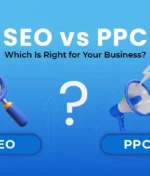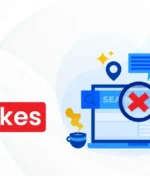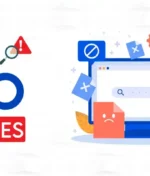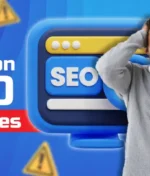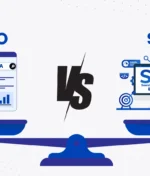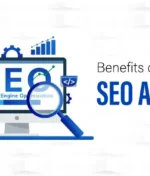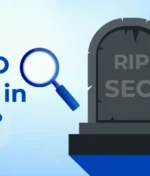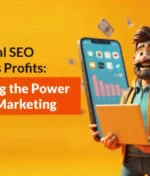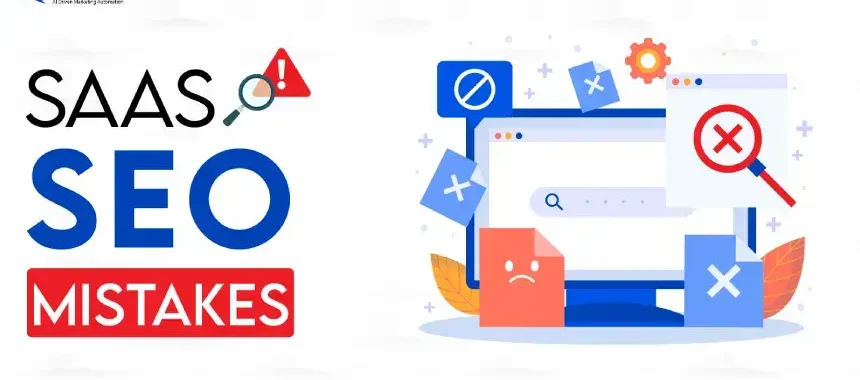
Top 7 SaaS SEO Mistakes Sabotaging Your Growth
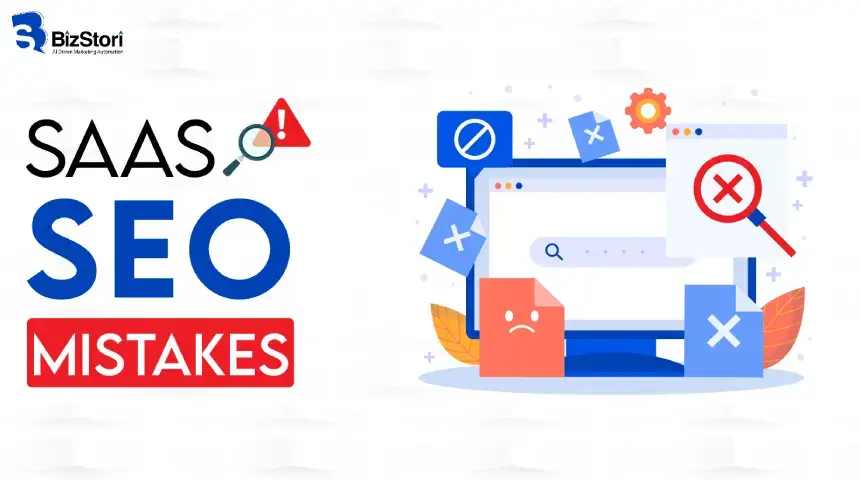
For a SaaS company, organic search is not just a marketing channel; it’s the engine of sustainable growth. Unlike other industries, your customers are often actively searching for solutions to complex problems, making SEO a critical tool for acquisition. Yet, many SaaS businesses make predictable SEO mistakes that cap their potential, waste resources, and leave them invisible to their ideal users.
Failing to get SEO right means more than just missing out on traffic. It means losing customers to competitors, struggling to build brand authority, and becoming overly reliant on expensive paid channels. This guide will break down the most common SaaS SEO mistakes we see time and again. We’ll explore why they are so damaging and provide actionable steps to fix them, leveraging modern SEO concepts to help you connect with your audience.
1. Targeting Only Bottom-of-the-Funnel Keywords
One of the most frequent SaaS SEO mistakes is focusing exclusively on “money” keywords. These are the high-intent, bottom-of-the-funnel (BOFU) terms like “best project management software” or “[competitor] alternative.” While these keywords are valuable, they represent a tiny fraction of your potential audience and are often incredibly competitive.
Your ideal customers aren’t just searching for a tool; they are searching for solutions to their problems. This is where top-of-the-funnel (TOFU) and middle-of-the-funnel (MOFU) keywords come in.
- TOFU: “how to improve team productivity”
- MOFU: “project management techniques for small teams”
- BOFU: “asana vs monday”
How to Fix It: Embrace a full-funnel content strategy. Use semantic SEO to identify the broad range of topics and questions your audience has at each stage of their journey. Create blog posts, guides, and templates that address their pain points before they are ready to buy. This approach builds trust and positions your brand as a helpful expert. When they are finally ready to choose a tool, yours will be the one they remember.
2. Ignoring Technical SEO Foundations
Many SaaS companies are so focused on content and features that they neglect the technical health of their website. Technical SEO is the foundation upon which all other efforts are built. A slow, confusing, or broken site will struggle to rank, no matter how great the content is.
Common technical SEO issues for SaaS sites include:
- Slow Page Speed: Large scripts, unoptimized images, and complex code can kill your load times and user experience.
- Poor Site Architecture: Confusing navigation and an illogical URL structure make it hard for both users and search engines to find important pages.
- Indexation Problems: Incorrect use of noindex tags or robots.txt files can prevent key pages (like features or pricing) from appearing in search results.
- Lack of Schema Markup: Not using structured data like SaaSProduct or FAQPage schema means you’re missing out on rich snippets that make your listings stand out.
How to Fix It: Conduct a thorough technical SEO audit. Use tools like Google Search Console, PageSpeed Insights, and Ahrefs’ Site Audit to identify and prioritize issues. Focus on creating a fast, mobile-friendly experience with a clean, logical structure that guides users seamlessly from a blog post to a feature page and, ultimately, to a sign-up.
3. Creating Feature-Focused, Not Benefit-Driven, Content
Your team is rightfully proud of your product’s features. The problem is, your customers don’t care about your features—they care about what those features can do for them. A classic SaaS SEO mistake is creating landing pages and blog posts that are just lists of technical specifications.
Modern search engines use Natural Language Processing (NLP) to understand content quality and user intent. They can tell the difference between a page that lists features and a page that solves a problem.
How to Fix It: Shift your content from being feature-led to benefit-driven. Instead of saying, “Our tool has a real-time collaboration widget,” say, “Stop wasting time in email chains and keep your team perfectly in sync.” Frame every feature in the context of the problem it solves or the value it delivers. This language resonates better with users and signals relevance to search engines.
4. Underestimating the Power of Programmatic SEO
Many SaaS products have the potential to generate thousands of highly specific landing pages. Think of sites like Zapier creating a unique page for every possible integration (“Connect Google Sheets to Slack”) or Canva making a page for every design type (“business card maker,” “Instagram post creator”). This is programmatic SEO. It involves using templates to create landing pages at scale for long-tail keywords.
Failing to leverage this strategy means leaving a massive amount of targeted, high-intent traffic on the table.
How to Fix It: Identify a scalable pattern in your business. Does your tool integrate with other software? Does it serve different industries or use cases? Design a robust template and use your database to generate hundreds or thousands of optimized pages. Ensure each page offers unique value and is not just a duplicate with a few words changed.
5. Having a Generic or Non-Existent Blog
“We need a blog” is a common refrain, but many SaaS companies treat it as an afterthought. They publish generic, low-effort posts that don’t target specific keywords or user pain points. A blog that doesn’t solve problems or drive traffic is a waste of resources.
Your blog is your primary vehicle for attracting top- and middle-funnel users. It’s how you build topical authority and earn valuable backlinks.
How to Fix It: Treat your blog like a product. Develop a content strategy rooted in keyword research and customer pain points. Create “topic clusters” where you have a central “pillar” page for a broad topic (e.g., “customer retention”) and link out to more specific “cluster” articles (e.g., “how to calculate churn rate”). This structure demonstrates expertise to search engines and keeps users engaged on your site.
6. Neglecting Internal Linking
Internal linking is one of the most underrated and powerful SEO tactics. It’s the practice of linking from one page on your website to another. A strong internal linking structure helps search engines understand the relationship between your pages, passes authority from strong pages to weaker ones, and guides users on a logical journey through your site. SaaS websites, with their complex mix of marketing pages, blog posts, and help docs, often suffer from chaotic internal linking.
How to Fix It: Be strategic with your internal links. When you publish a new blog post, link to relevant feature pages or other related articles. From your high-authority pages (like your homepage), link to your most important money pages. Use descriptive anchor text (e.g., “our team productivity tool” instead of “click here”) to provide context for both users and search engines.
7. Ignoring Link Building
“If you build it, they will come” does not apply to SEO. You can have the best content and a technically perfect website, but without backlinks from other reputable sites, you will struggle to gain authority and rank for competitive terms. Many SaaS startups are so focused on product development that they completely ignore off-page SEO.
Backlinks are a primary ranking factor because they act as third-party votes of confidence.
How to Fix It: Develop a proactive link-building strategy. Some effective tactics for SaaS include:
- Digital PR: Create unique data reports, studies, or surveys that journalists and bloggers will want to cite.
- Helpful Content: Build free tools, templates, or calculators that other sites will naturally link to as a resource.
- Podcast Tours: Appear as a guest on relevant industry podcasts; you’ll almost always get a link from the episode page.
- Integration Partnerships: Build links from the integration directories of your software partners.
Move Beyond Mistakes to Achieve Growth
The journey to dominating organic search is a marathon, not a sprint. By avoiding these common SaaS SEO mistakes, you can build a powerful, sustainable engine for customer acquisition. Shift your focus from simply listing features to solving user problems, build a strong technical foundation, and create a web of valuable content connected by strategic links. Do this, and you will not only attract more visitors you will build a brand that customers trust and choose.

